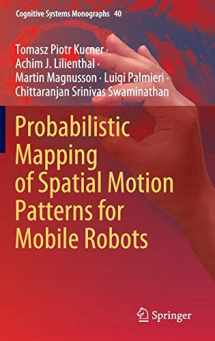
Probabilistic Mapping of Spatial Motion Patterns for Mobile Robots (Cognitive Systems Monographs, 40)
Book details
Summary
Description
This book describes how robots can make sense of motion in their surroundings and use the patterns they observe to blend in better in dynamic environments shared with humans. The world around us is constantly changing. Nonetheless, we can find our way and aren't overwhelmed by all the buzz, since motion often follows discernible patterns. Just like humans, robots need to understand the patterns behind the dynamics in their surroundings to be able to efficiently operate e.g. in a busy airport. Yet robotic mapping has traditionally been based on the static world assumption, which disregards motion altogether. In this book, the authors describe how robots can instead explicitly learn patterns of dynamic change from observations, store those patterns in Maps of Dynamics (MoDs), and use MoDs to plan less intrusive, safer and more efficient paths. The authors discuss the pros and cons of recently introduced MoDs and approaches to MoD-informed motion planning, and provide an outlook on future work in this emerging, fascinating field.


We would LOVE it if you could help us and other readers by reviewing the book
Book review



